The 6 best laptops for engineers in 2024
Engineering can be very difficult, from the long nights to the great responsibility; if you don’t have the right tools to get things done properly, it can feel overwhelming. Luckily, most modern engineering happens with computer assistance, so having a solid PC is important both to doing a good job and maintaining your mental health so that you aren’t struggling with your tools. That’s why we’ve gone out and picked our favorite engineering laptops and put them below for you to check out. While it’s true that there are a massive number of different types of engineering, most of these should fit the bill across the board because they have powerful processors and a lot of RAM to work with.
The Best Laptops for Engineers in 2024
Buy the ASUS ROG Zephyrus M16 if you want the best overall laptop for engineers
Buy the M3 MacBook Air 15 if you want the best MacBook laptop for engineers
Buy the Samsung Galaxy Book3 Pro 360 if you want the best 2-in-1 laptop for engineers
Buy the LG Gram 17 if you want the best thin and portable laptop for engineers
Buy the Legion Pro 5 Gen 8 if you want the best value laptop for engineers
ASUS ROG Zephyrus M16
Best overall laptop for engineers
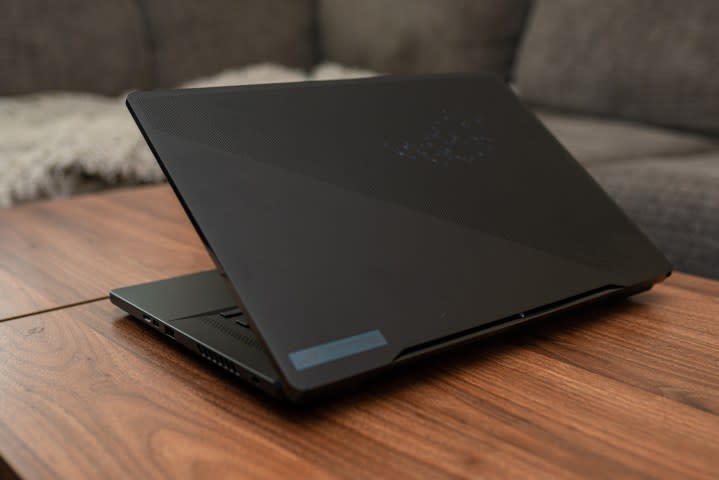
Pros | Cons |
Smart and stylish design | Battery life is a bit weak |
Excellent keyboard | Is a bit heavy |
Beautiful 240Hz screen |
It’s true that the ASUS ROG Zephyrus M16 is essentially a gaming laptop, but you’d probably not be surprised to find out that there is quite an overlap between gaming needs and engineering app needs. For example, CAD apps like AutoCAD and Solidworks tend to be quite resource-heavy when you’re trying to run them, so you need the same sort of beefy specs that come with a gaming laptop. The only real difference is that you might not need a really powerful GPU for engineering, although this configuration of the Zephyrus M16 does have it if you need it.
Under the hood, you’ll find an RTX 4080, which is on the higher end of graphics cards, and it will certainly help if you need more design and rendering-related apps to run smoothly. Plus, it’s always good if you want to get some gaming on or if you want to do more complex graphics rendering, such as with Maya3D or Blender. As for processing power, you get the Intel Core i9-13900H, one of the best CPUs on the market that will easily handle pretty much any apps you throw at it, so it’s a really good pick if you sometimes struggle with app performance.
Another big positive is that you get a whopping 32GB of DDR5 RAM, which may be a little bit of an overkill, but if you consider yourself a power user who ends up having a lot of tabs and apps open at the same time, then you’ll appreciate it. On the other hand, what you might not appreciate is the rather middling battery life, which won’t really last you more than 4-5 hours when using it for productivity, so you’ll have to take the charging brick with you. That means the whole setup becomes a bit heavy and unwieldy, although that’s about what you’d expect for this level of performance, so it’s not necessarily a dealbreaker.
Specifications | |
|---|---|
Screen Size | 16-inches |
Processor | Intel Core i9-13900H |
GPU | RTX 4080 |
RAM | 32 GB DDR5 |
Storage | 2 TB |
Weight | 5.07 pounds |
M3 MacBook Air 15
Best MacBook laptop for engineers
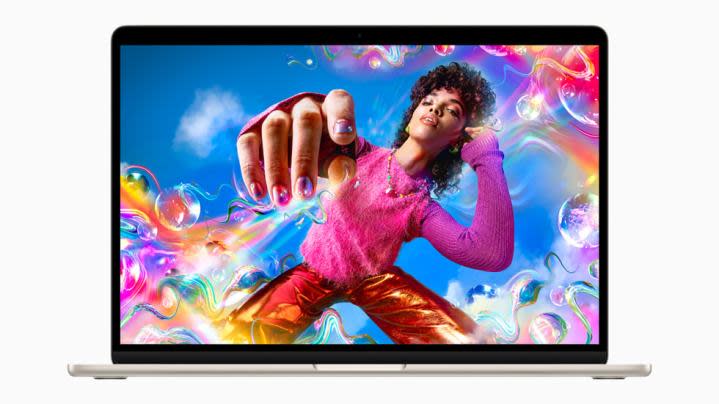
Pros | Cons |
Long-lasting battery | Only supports one external display |
Shockingly thin | |
Excellent speakers |
Before the get-go, it’s important to note that you might struggle a lot with using an Apple device for engineering, if only because a lot of the apps and advice tend to be very Windows-specific. So, be sure to check that your tech stack can run on MacOS before taking the plunge on a MacBook. Of course, if all your apps work on MacOS just fine, then one of the best options you can go for is the M2 MacBook Air 15, which offers one of the best middle-ground experiences for Apple while still not being exceedingly expensive.
Luckily, it runs the M3 Chip, which is one of Apple’s best processors on the market, only superseded by the M3 Max and the M3 Ultra, neither of which are available for the MacBook Air, with the M3 Ultra being available only for various Mac models. The configuration we’ve picked includes a pretty solid 16GB of DDR5 RAM, which is great because Apple tends to lock RAM behind a higher-priced paywall, and given that it’s cheaper than our top option, it’s a good way to go. The same applies to the 1TB SSD that you get, as storage is another thing that Apple tends to be a bit stingy about.
As for the screen, it’s a gorgeous 15.3-inch panel running a 2880 x 1864 resolution, so it’s great for looking at a screen for a considerable amount of time. As for graphics performance, well, it also comes courtesy of the M3 Chip under the hood, with a 10-core GPU that should be more than enough for any sort of graphical rendering that you might require. Of course, one of the best things about the MacBook Air is the very long battery life you’ll get out of it, with well over 10 hours of use, even when being used for productivity, so it’s also a great option if you need a lot of battery life.
Specifications | |
|---|---|
Screen Size | 15.3-inches |
Processor | M3 Chip 8-core CPU |
| M3 Chip 10-core GPU |
RAM | 16 GB DDR5 |
Storage | 1 TB |
Weight | 3.3 pounds |
Samsung Galaxy Book3 Pro 360
Best 2-in-1 laptop for engineers
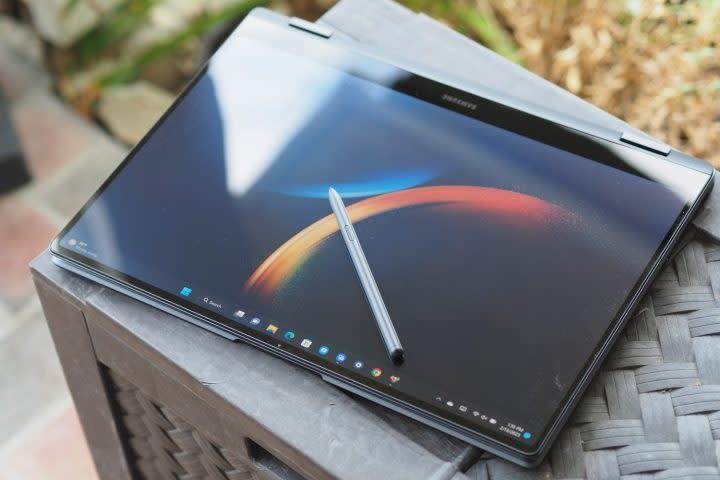
Pros | Cons |
Spectacular OLED display | Not faster than all 12th-gen Intel machines |
Solid build quality | Expensive at list price |
Very thin and light | Doesn’t have a discrete GPU |
One of the great things about modern technology is that you don’t have to use a laptop like you would five or ten years ago, but instead, you can use it like a tablet like the Samsung Galaxy Book3 Pro 360, which is one of the best 2-in-1 laptops out there. It’s a great option for those who are constantly on the go and who give presentations and need access to a handheld device, and while it is a little bit heavy, you tend to get used to the weight after a while. Another big positive of the Galaxy Book3 Pro is that it has some great specs under the hood, like the Intel 13th Gen Evo Core i7-1360P, which is one of the higher-end CPUs on the market and should handle most engineering apps you throw at it without issue.
That said, it does lack a discrete GPU which can be a bit problematic when it comes to rendering things, and while it does have an integrated GPU in the form of an Intel Iris Xe, it’s not the same. That said, if you don’t do a ton of rendering and know that you don’t need a discrete GPU, the Iris Xe is perfectly fine, although it’s always a good idea to check the preferred requirements of your apps before buying. On the other hand, if you do need a bit of processing power, you could consider grabbing the Samsung Galaxy Book3 Ultra, which is considerably more expensive for roughly the same specs, but at least it comes with an RTX 4050.
Luckily, the Book3 Pro 360 comes with a solid 16GB of DDR5 RAM, so you’re not going to have an issue running most of your apps, and the included 1TB SSD should be more than enough storage as well. It’s also worth noting that the pen experience is pretty excellent, although that’s no surprise given that Samsung has a lot of experience with it from its tablets. As for battery life, you can expect a full day of use for the most part, with the best light-use scenario giving you about 12-13 hours of battery, although using it for work will certainly eat into that.
Specifications | |
|---|---|
Screen Size | 16-inches |
Processor | Intel 13th Gen Evo Core i7-1360P |
GPU | Intel Iris Xe |
RAM | 16 GB DDR5 |
Storage | 1TB SSD |
Weight | 3.66 pounds |
LG Gram 17
Best thin and portable laptop for engineers
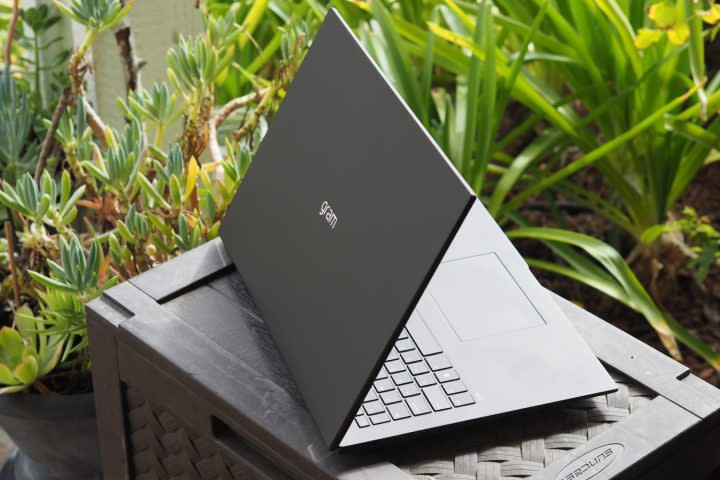
Pros | Cons |
Exceptionally light | Feels a little flimsy |
Excellent display | Expensive |
Very good keyboard and touchpad | Only has an RTX 3050 |
Another great option if you want something that’s thin and light but has a big screen is the LG Gram 17, and luckily, this one comes with a discrete GPU, although it’s only an RTX 3050, which is an older generation GPU. While it won’t let you run the latest games, it should handle most basic graphics rendering work just fine, so it’s not a dealbreaker. That’s especially true given how incredibly thin and light it is at just 3.2 pounds and 0.7 inches of thickness, meaning it’s thinner than your average paper notebook, so it’s easy to slip into a bag and take it with you everywhere.
Even so, the thin design does mean it feels a bit flexible and flimsy, although it has passed the MIL-STD-810G standard military testing, so it’s certainly robust enough to carry around. Performance is also pretty excellent with the Intel Core i7 Evo CPU under the hood, another semi-high-end processor that should handle most, if not all, engineering apps just fine. You’ll also be happy to know that you get a massive 32GB of DDR5 RAM, so if you’re the type of person who constantly runs into lag from opening a lot of apps and tabs, then this configuration of the Gram 17 is perfect for you.
Of course, one of the biggest selling points is the massive 17-inch 2560×1600 resolution screen that makes it a lot easier to sit in front of a screen all day long, which is good because it has a pretty substantial battery life that will easily last you up to 21 hours on light usage. We’re also happy to see that it comes with a 2TB SSD for you to work with, so you won’t likely have to rely on an external storage drive, and the keyboard and touchpad are both pretty excellent to use, which is nice. Unfortunately, all this quality comes at a steep price, but if you need something that’s thin, light, and high-end, that’s the price you’ll have to pay, and it’s totally worth it.
Specifications | |
|---|---|
Screen Size | 17-inches |
Processor | Intel Core i7 Evo |
GPU | Nvidia RTX 3050 |
RAM | 32 GB DDR5 |
Storage | 2 TB |
Weight | 3.2 pounds |
Legion Pro 5 Gen 8
Best value laptop for engineers
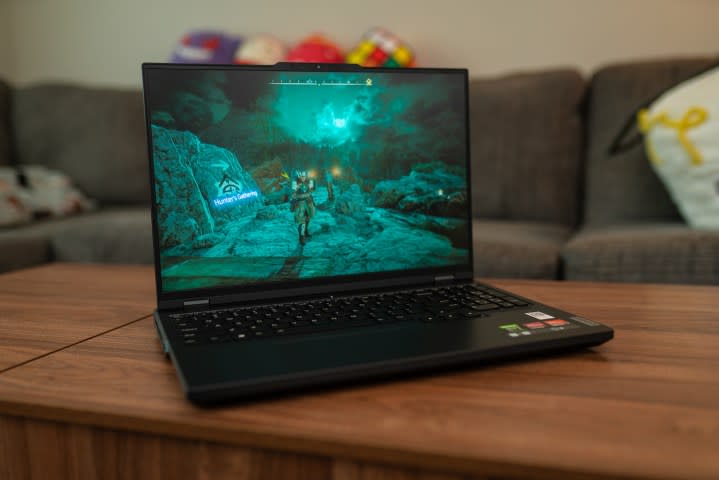
Pros | Cons |
Fantastic value | Middling screen |
Top-tier GPU performance | A bit heavy |
USB-C charging available |
If you want to save a bit of extra money and don’t need anything too fancy, the Legion Pro 5 Gen 8 is actually a pretty great value option, especially since it and similar configurations regularly go on sale and bring them closer to $1,000 or so. And while that is still quite a bit of money, you do get a lot in return, such as having an RTX 4060 under the hood, which is better than a couple of more expensive options on this list, so it’s actually not that bad. In fact, the RTX 4060 is a solid mid-range gaming GPU, so it has enough power to run a good amount of graphical rendering that you might be doing with your engineering applications.
Also, instead of getting a typical Intel CPU, you get an AMD Ryzen 7 7745HX processor, which is roughly equivalent to an i7 and slightly more efficient power-wise, which always helps with battery life consumption. That said, it’s not going to be that much, especially since most engineering apps are likely to tax the Ryzen 7 as much as they would an Intel i7 and either way, you’ll be fine running whatever you need. You’ll also be happy to know that, even for a value-oriented option, you still get a solid 16GB of DDR5 RAM, which is still enough to handle apps like Excell, AutoCAD, and even a bunch of tabs running at the same time.
As for the screen, it’s a large 16-inch one with a resolution of 2560 x 1600, and while it’s not touch-enabled like some other options on this list, it does hit 100% of the sRGB color gamut, which is excellent, as is the 165Hz refresh rate. On the other hand, it’s not as sleek and lightweight as some of the other options, and it comes in at a bulky 5.5 pounds, which is a significant bump from a lot of other options here. Even so, that’s not necessarily a dealbreaker, especially given that the keyboard is pretty great, it has a ton of great specs, and the battery life is pretty good.
Specifications | |
|---|---|
Screen Size | 16-inches |
Processor | AMD Ryzen 7 7745HX |
GPU | Nvidia RTX 4060 |
RAM | 16 GB DDR5 |
Storage | 1TB SSD |
Weight | 5.51 pounds |
How We Chose These Laptops for Engineers
CPU
Much like any other computer, the beating heart of a good laptop for Engineers includes something that has a reasonably powerful CPU under the hood. That often means, at a minimum an Intel i5 or a Ryzen R5, both of which are considered mid-ranged CPUs that can handle most engineering apps like SketchBook and AutoCAD relatively well. That said, the more power you have, the better, which is why we mostly focused on laptops that are one step up in terms of processors, so you get the Intel i7 or an AMD Ryzen R7. Both of these CPUs are mig-to-high-end and can handle all these apps just fine, and our top pick, the ASUS ROG Zephyrus M16, comes with an Intel i9, one of the best CPUs on the market, so if you really need to push the performance of your apps, that’s the laptop to pick.
GPU
Another thing that’s also worth considering is the graphical performance, and even though you may not want to game, having a discrete GPU can make a big difference, depending on what sort of apps you’re using. For example, if you tend to work a lot with things that require graphical rendering, such as Maya3D or Blender, then having a solid GPU is the way to go. Luckily, pretty much all of our picks have some form of GPU or another that should handle things, even if there is a bit of lag involved. The only option that doesn’t do so is the Samsung Galaxy Book3 Pro 360, and if you don’t really have any graphical rendering in your workflow or the need is very light, that’s certainly a perfectly fine option to go with.
RAM
While it may not seem like it, having a good amount of RAM can make a big difference too, and while you can certainly get away with 8GBs, it’s going to be a struggle. That’s why we mainly focused on 16GB and 32GB RAM options because you’re likely going to have a couple of apps open, a few Excel sheets and several browser tabs to reference or look for information, and all that takes its toll. So, ideally, if you can swing it, going for more RAM is better, and if you know for a fact that you are a heavy-duty user and often run into RAM problems like not being able to open new tabs or apps because of memory problems, aim for the highest RAM you can afford.
Screen
While this won’t necessarily affect how well an app does or doesn’t run on your laptop, it does make a big difference in quality of life, especially since you’re very likely going to look at things in very fine detail. That can be difficult on lower resolutions, which is why we aimed for laptops that have a 2k resolution or better. We also did our best to pick laptops with larger screens, with the smallest being the 15.3-inch screen of the M3 MacBook Air, so if you’re the type of person who enjoys having more screen real estate, then almost any option on this list should be good for you, although the largest is the LG Gram 17, so if you really just want the biggest screen size possible, we’d suggest going for that one.
This article is managed and created separately from the Digital Trends Editorial team.

